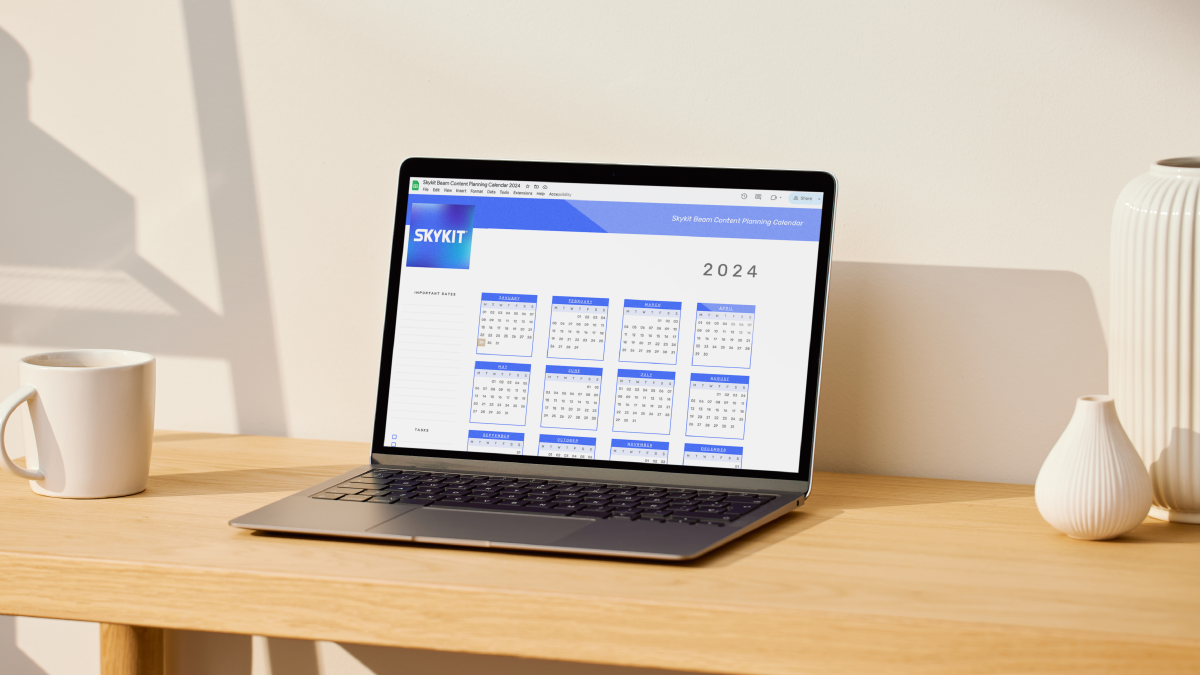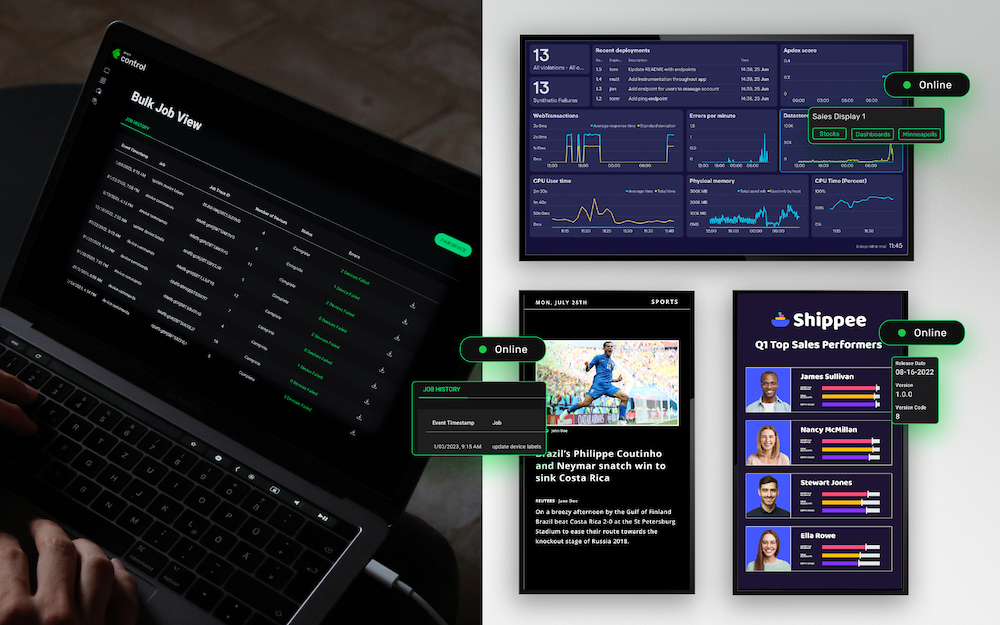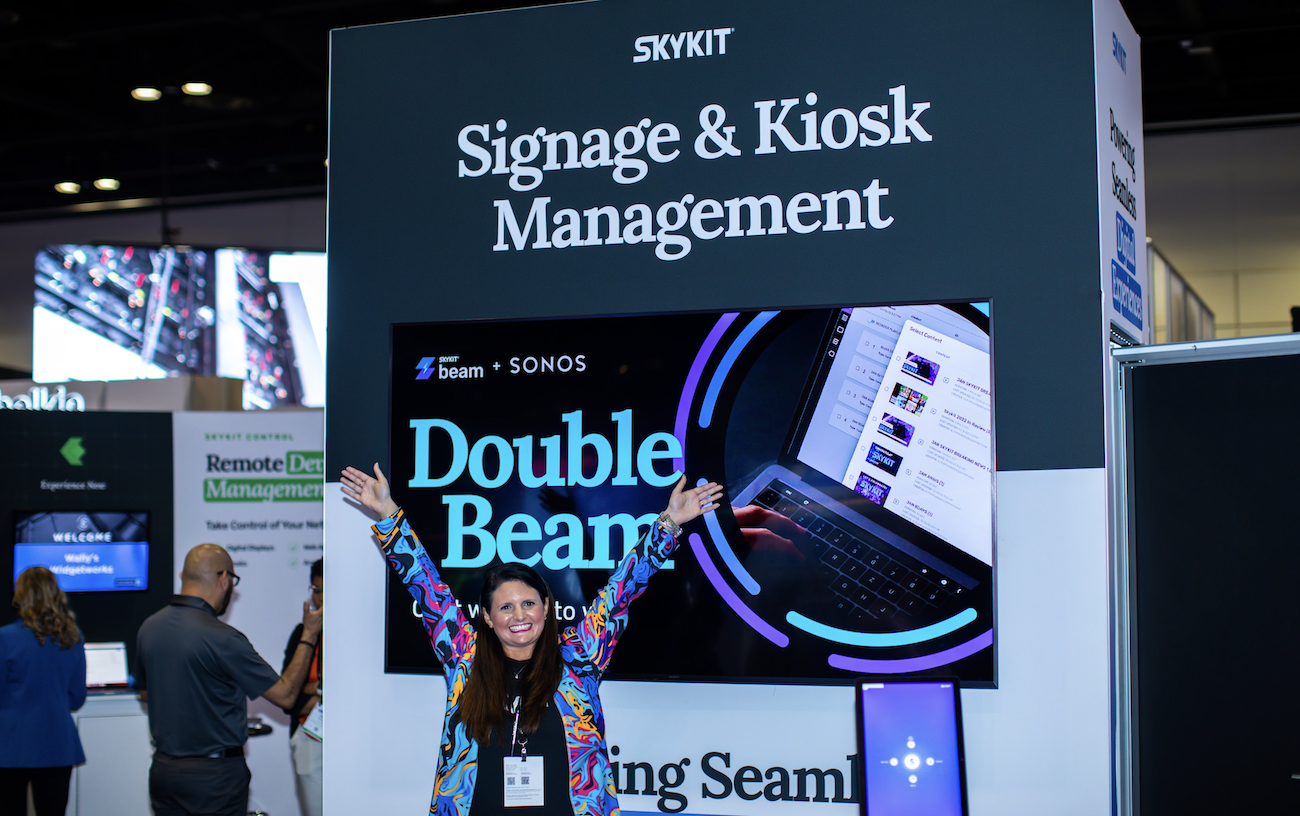There are multiple uses for digital signage in higher education. Today’s college students are conditioned to video, screens, and Internet-based information.
To drop them in an environment without it might actually be a culture shock.
Bear this in mind:
This demographic fills out paperwork – electronically.
This demographic becomes educated – electronically.
This demographic delivers information – electronically.
This demographic does their homework – electronically.
They thirst for rich media, like video, audio, and other elements that ultimately encourage them to interact. Administration and staff at colleges and universities understand this.
Three years ago, only a third of colleges were using digital displays. Today, that number has exploded to nearly 70 percent. That’s an incredible increase.
So how did that number increase so quickly? Here are seven ways higher education implements digital signage to better serve their staff and students.
1) To Change The Menu
As QSR’s and fast casuals move rapidly into the land of electronic menus and kiosks, so do the massive lunchrooms at colleges and universities everywhere. Like any other food service institution, food runs out and options change. New ideas and recipes emerge. Hungry people want to know this.
Digital menus allow users to alert hungry folks of these changes. They also allow menu prices and choices to be updated electronically in seconds. These changes, coupled with enticing video and imagery, can help move a student from a not-so-healthy option to a healthy option.
Because there are more stations and even more food options on college campuses, digital menus are enabling staff to keep the lines moving faster. By switching out options and removing foods that are no longer available, students don’t have to wait for staff to check in the back.
Wait times are perceived as shorter, too. When students can spend their time watching videos of steaming vegetables or sparkling water, their wait time seems to shorten. This keeps them happy, which keeps the entire staff behind the counters happy, too.
2) When Classes Change
Back in the day before cell phones, college students were made aware of class changes via a piece of paper taped to the door that said, “NO CLASS TODAY.” While the initial reaction for some may be jubilation, other students ended up frustrated. Time to get to class was essentially wasted; time that could have been better spent working on projects or just staying home eating ice cream and watching TV.
Today digital signage solutions can alert students to schedule changes. Even before they step on campus, alerts and updates can be sent to their phones.
Some students are part-time and travel to campus for one class on some days. To travel without a class cancellation notification can certainly be frustrating.
By installing signs at every building entrance and implementing a mobile alert system, colleges and universities are making the college experience easier for many. Students everywhere can stay in bed another hour, which, for some, can be considered heaven.
3) When Buildings Close
Construction happens. Accidents happen, too. If there is an issue in a building on campus, letting students and staff know can save a lot of time and heartache.
Using the same digital signs that alert students to class changes can save time and frustration in two ways:
- It can advise students and staff via the signs and mobile alert system.
- It can alert students where to relocate if class is still in session.
These alerts can also show up on any wayfinding signs throughout the campus, which brings us to our next point…
4) Wayfinding
Wayfinding kiosks on college and university campuses are lifesavers, especially for new students and staff members.
Big or small, wayfinding signage has become a key component for making a good impression on a prospective student, especially during their first visit to the campus.
The University of Central Florida deployed wayfinding touchscreens a few years back. The touchscreen maps are located at prime spots on campus. The really great part is that a user doesn’t have to stand there and wait for directions if they don’t want to. They can simply tap the kiosk and choose an option to have directions texted to them.
(There’s that mobile integrated technology again.)
Wayfinding kiosks can also alert students and staff if a sidewalk is under construction or a specific building is temporarily off limits. Bright colors or strikethroughs are used to alert users.
With the right software, the same messages can be shared on digital signs and wayfinding kiosks.
5) Create a Sense of Community
Despite the Digital Age scaring some of us into believing having our noses pressed into our smartphones or large screens is isolating us, digital signage on campuses can actually do the opposite by creating a sense of community.
How is this accomplished?
In some schools, educators make it a point to share information on upcoming events, birthdays, birth announcements, and sporting events. Administrators take it a step further by offering bios of some of the players.
By including a players picture, what position they play, and what year they are in school, students and staff can easily become familiar with their classmates and cheer them on by name.
This can be done with any kind of event, really. Classmates getting to know other classmates can help create greater school pride and camaraderie.
6) To Alert During an Emergency
To date, there is no possible way to alert the world in the days or hours before a sudden tragedy strikes. But, there is a way to advise them in the first seconds of it happening.
It’s troubling, but if you ask any given person if they can name at least one school tragedy of some kind, it’s likely they can. These unfortunate events have made school security a big concern. And while security measures have been incorporated to avoid such tragedies, it never hurts to add another layer.
In case of an emergency, levers or buttons placed strategically throughout the school campus can alert authorities and initiate a lockdown.
Emergency messaging signage picks up these signals and make everyone on campus aware of what’s happening and what to do to keep themselves safe.
In some cases, a lockdown function automates perimeter security, alerts special needs students via digital signage, and transmits video to police so intruder activity can be thwarted.
These systems can also integrate mobile alerts to keep students at bay that haven’t yet arrived on campus.
7) To Improve Library Circulation
Remember the Dewey Decimal System? Ask a young person about that now and ten to one, a small percentage of then won’t be able to tell you.
But that’s not even the sad part….
The sad part is that more and more libraries are seeing a decrease in attendance, thanks to the increased use of eBooks and other digital devices that deliver book smart information.
LaGrange College in LaGrange, Georgia, has found a way to thwart this phenomenon with digital signage. According to Loren Pinkerman, LaGrange College library director, “Anecdotal evidence and uplift in library attendance tell us that our digital signage deployments have been a successful and positive addition to campus-wide communication,” she said.
After incorporating digital signage on behalf of the library, the school has seen increased materials circulation by 20%. But that’s not all:
- They were able to effectively double library utilization.
- The school was able to encourage attendance to other campus events.
- The administration was able to introduce staff to students using photos and bios.
See? Books aren’t dead. They just need a little help from their electronic friends.
Conclusion
Higher education isn’t the only division benefiting from the use of digital signage. K-12 is also incorporating many of these methods.
From menu boards to wayfinding to classroom interaction, schools across the globe are finding ways to make life easier after digital signage deployment.
In lunchrooms, digital menus are shifting perceived wait times, giving students more menu options, and offering choices that are healthier than what they would traditionally order.
Thanks to technology, students, and staff can be made aware of class cancellations or time changes. If a teacher wants to move his class to the auditorium or a classroom needs a quick fix, mobile alerts integrated to campus-wide digital signs can let students know.
The same holds true when building maintenance becomes a priority.
Wayfinding solutions ease anxiety for new students and staff. These wayfinding kiosks, located in various places on campus, can also advise students of construction on parking lots and sidewalks, as well as any class cancellations.
Creating a sense of community is also possible. Sharing birthdays, birth announcements, events, even welcoming new students and staff, can keep a sense of community strong and intact on campuses.
Of all the ways digital signs can serve, alerting a campus community of an emergency or tragedy is, by far, the most valuable. Lives can be saved and other tragedies can be averted with integrated mobile technology and up-to-date digital sign information.
Finally, bringing students back to the library can be done with the very thing that moved them out: technology.
No matter how you cut the cake, digital signage on college campuses is improving communication and integration.
There are dozens of ways to implement digital signage in higher education. What have you seen college campuses implement?



